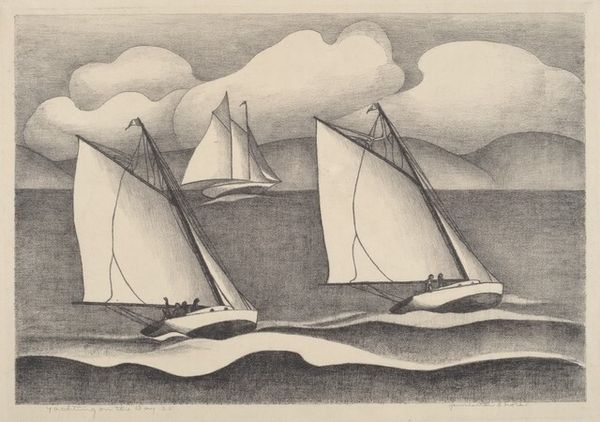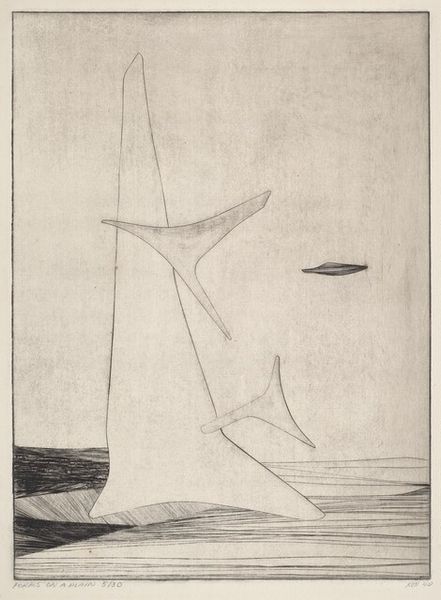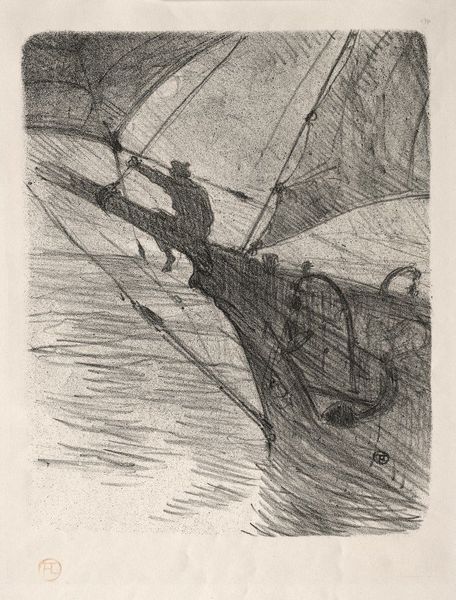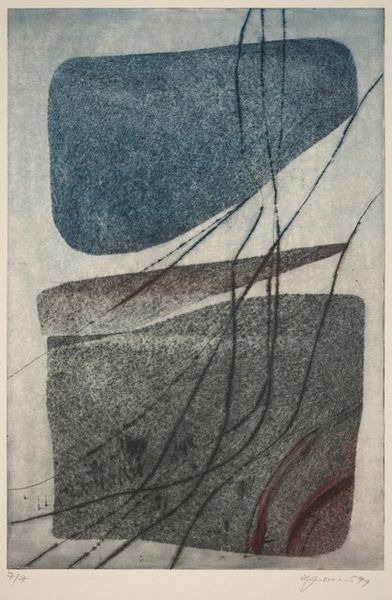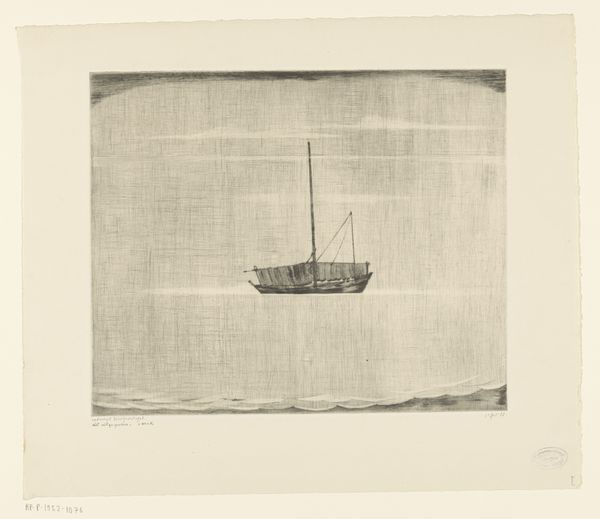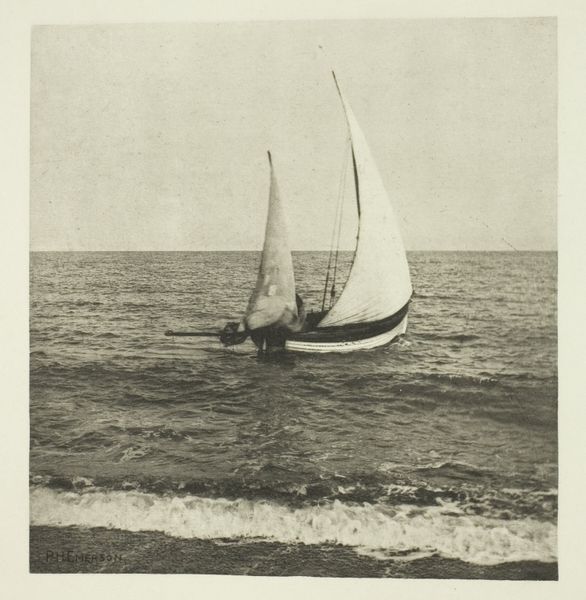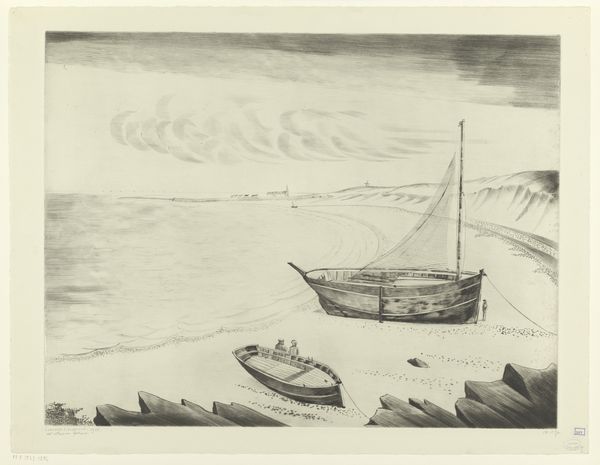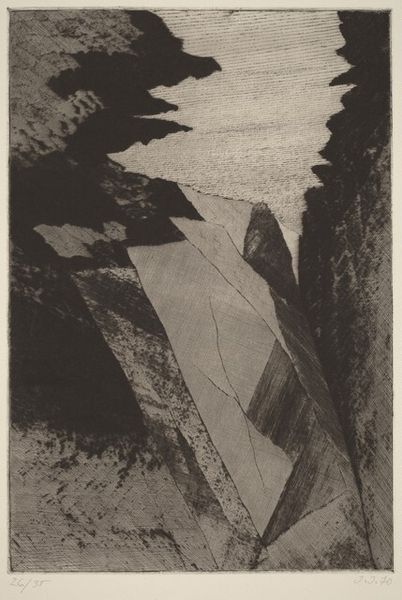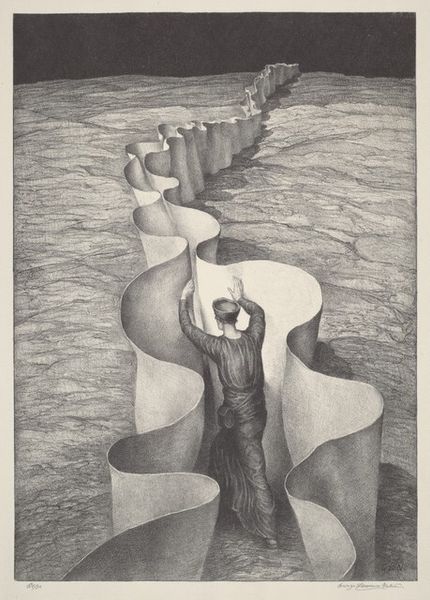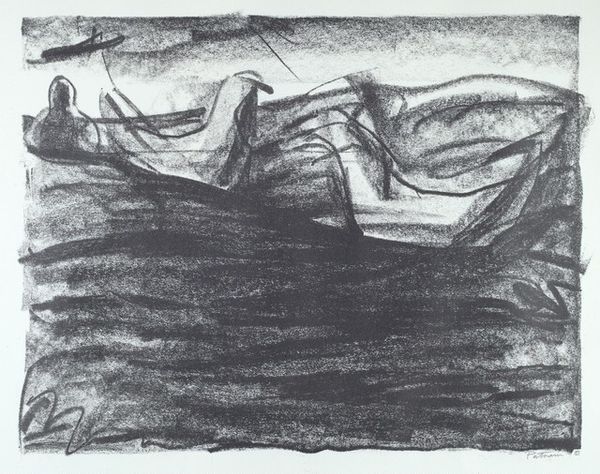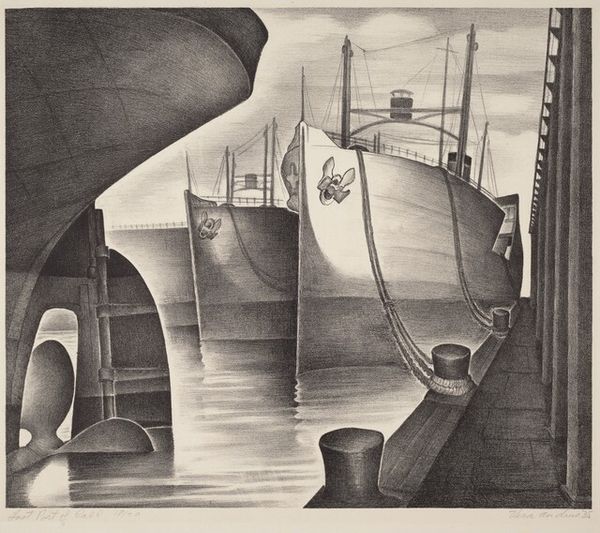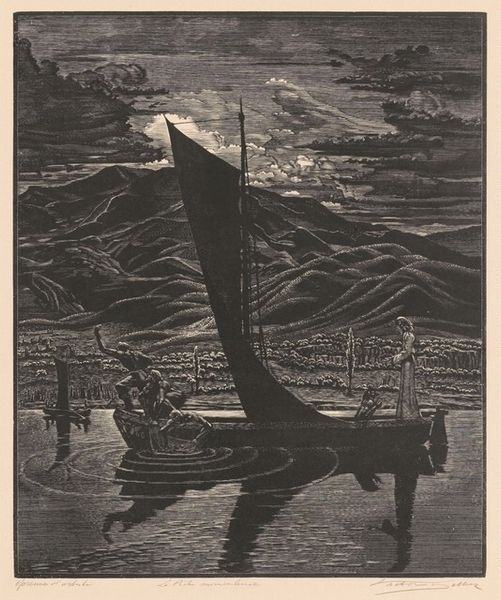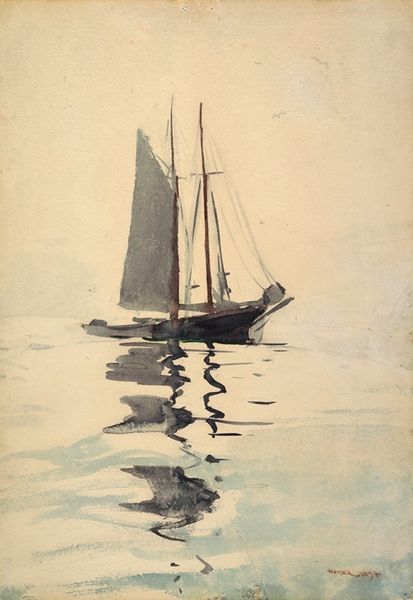
drawing, print, pencil
#
pencil drawn
#
drawing
# print
#
landscape
#
pencil drawing
#
geometric
#
pencil
#
abstraction
#
modernism
Copyright: National Gallery of Art: CC0 1.0
Curator: Looking at this pencil drawing, titled "Grand Lake" by Arnold Rönnebeck, there is an almost ethereal mood to the landscape that softens its bold geometric components. What strikes you most immediately? Editor: Well, the stark contrast definitely catches the eye. The artist really focuses on the fundamentals here – paper, pencil, and deliberate, repeated marks creating areas of light and shadow. It seems Rönnebeck wants us to think about process. Curator: That's a wonderful point, how Rönnebeck highlights that almost industrial production of marks that add up to a natural scene. It has a connection to modernism by breaking the lake into component shapes while echoing, through landscape, ideas about labor and industry. It’s a strong, publicly engaged kind of art that brings modern concepts back to the public sphere. Editor: Absolutely! Look at how the artist depicts reflections on the water, too: those aren't the natural shimmering refractions you’d expect. Instead, there are strong geometric forms, very solid, which speaks volumes about manipulating material – pencil, paper – to alter perceptions of a familiar substance. Curator: Exactly, and that also ties to his larger concerns. The lake as both a recreational space, perhaps for the rising middle class, but also a resource. By rendering it so starkly, Rönnebeck almost seems to ask us: what is this for? What does it represent? Editor: Yes, and it is important not to overlook the function of the sailboat – what would be luxurious pastime with its production relying on manufacturing industries, such as sails and hulls, the labor to build the materials, and leisure time required to even take a trip to Grand Lake to sail on. It seems Rönnebeck wants us to investigate all facets of production in this so-called nature scene. Curator: What a sharp way to put that. Ultimately this isn't simply about a day on the water. It makes you consider the underpinnings of the structures, labor, and markets, both visible and unseen, that contribute to what we see before us. Editor: And how our experience of the drawing also becomes something similar to our experience of that day at the lake – nothing happens without layers and layers of complex processes. Curator: Indeed. Thanks for diving into that, a perspective I won’t soon forget. Editor: Thank you! Always good to engage about materials, processes, and making practices in art.
Comments
No comments
Be the first to comment and join the conversation on the ultimate creative platform.
